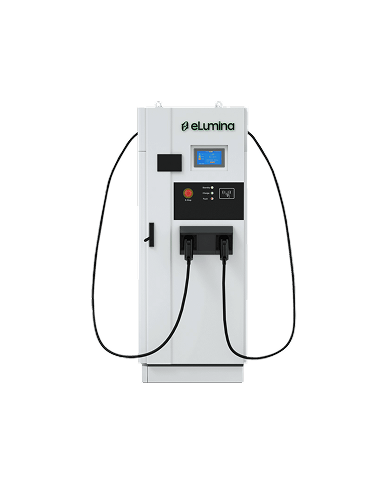- key features
- Specifications
- FAQS
The D2/D2+ Fast Charger is a reliable and scalable solution for commercial, fleet, and public charging networks.
- Delivers up to 360 kW with dynamic power allocation
- Dual connectors can simultaneously charge two vehicles
- Suited for current and next generation EVs
- IP55-rated design ensures durability in extreme conditions
- D2+ supports CCS2 and optional CHAdeMO connectors
- Industry-leading cybersecurity and functional safety
- Ongoing servicing and maintenance through our cloud platform and local maintenance team
- Australian-owned and RCM-certified.
- D2 Dimensions (L*W*H): 750 x 630 x 1912mm
- D2 Weight: ≤438kg
- D2 Max Output: 180 kW
- D2+ Dimensions (L*W*H): 800* x 788 x 1980**mm
(Excl. *charging cables and **lifting bolts) - D2+ Weight: ≤ 707 kg (Excluding cables and cable management)
- D2+ Max Output: 360 kW
- Max Efficiency: > 95% (Peak)
- Operating Temperature: -30°C to +55°C (Power derating over 40°C)
How much ground space is required?
The base dimensions of the D2 Fast Charger are 750 x 630 x 1912mm; the base dimensions of the D2+ Fast Charger are 800* x 788 x 1980** mm (excl. *charging cables and ** lifting bolts); and require a clearance of 1000 mm behind unit to a wall and 1000 mm either side.
What type of support does eLumina offer for EV charging installation?
eLumina provides comprehensive support, including site analysis, electrical planning, site planning, product matching, and the final delivery of a ready-to-use charging station. Additionally, we offer reliable after-sales support and maintenance services.
How can eLumina’s products contribute to cost savings for businesses?
With our battery technology, we implement an automatic charging strategy during low electricity prices, storing energy for later use when prices are higher. This allows customers to use power at the lowest price and achieve cost savings.
What data and information are accessible for owners or site hosts from eLumina?
On eCSM, site hosts can easily manage and optimise operations. They can remotely control the chargers and utilise data intelligence to support decision-making. Data collection includes an overview of the daily and monthly number of orders, GMV, average charge amount, sales chart, activeness chart, each charger’s performance, traffic analysis, fault records, order type analysis (reserve, refund, abnormal), member information, etc.



